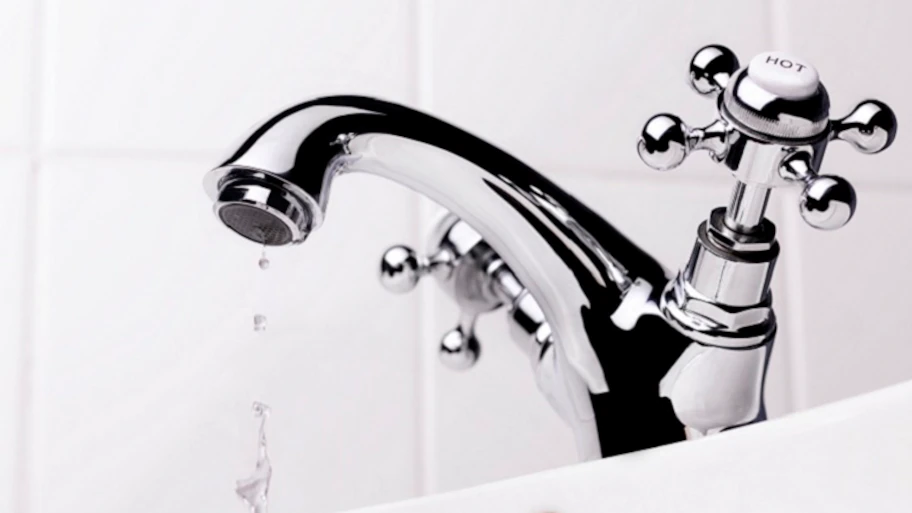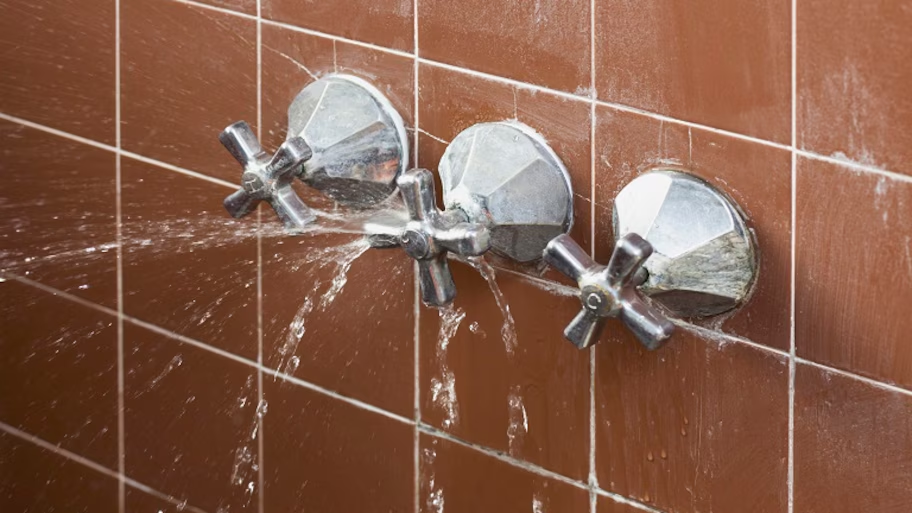What Are the Signs of a Hidden Water Leak in Your Bathroom?
Hidden bathroom water leaks often come along with some telltale signs, from a musty smell to a wobbly toilet


Damaged or discolored walls, floors, paint, or ceilings are common signs of a leak.
A wobbly toilet could mean a broken wax ring.
Mold and mildew are other signs of a leak.
Water damage restoration costs around $3,600 on average.
Fix bathroom leaks as soon as they happen to avoid water damage.
A hidden water leak in your bathroom can cause serious plumbing issues and mold if not identified and fixed. In addition to potentially causing expensive damage to the walls or floor, a water leak can raise your water bill. But don’t stress—there are some telltale signs you may have a leak, so you can hire a local plumber to take care of it before things get worse.

1. Musty Smell
Have you noticed an earthy or musty smell in your bathroom lately, even after giving it a good cleaning? Don’t ignore this crucial sign of a potential water leak. (Or worse, simply try to cover it up with flowery air fresheners.) Keep looking for the hidden water leak, from inside your cabinets to behind your faucet, until you find the source.
2. Mildew or Mold
Mold thrives in moist, dark areas. Pipes, which are typically hidden in a wall or under flooring, provide the perfect breeding ground. If you see mold or have an allergic reaction, like irritated eyes or wheezy breath, it’s possible you may have a hidden water leak. Investigate further and make sure to clean mold thoroughly so it doesn’t spread.
Keep in mind that it’s normal for a little mildew to occur wherever water accumulates, such as in the corner of a shower. However, mold or mildew on non-shower walls or in corners of the bathroom is a clear sign that water is leaking somewhere and finding its way to those areas.
3. Damaged Paint or Wallpaper
If you see blistering paint or water stains on your pretty wallpaper, you could have a leak in the bathroom. Look at the floorboards, too. Some are like sponges and a little water damage will cause them to expand and warp quickly.
In most cases, steam from hot showers shouldn't cause paint to bubble or wallpaper to peel away. When water and moisture get between the wall and the paint, they weaken the stickiness. You might notice paint beginning to fall off in pieces or wallpaper coming loose. It’s possible to temporarily fix a pipe until you find a plumbing pro who can get there.
4. Damaged Walls
Another sign of a hidden bathroom leak is wall damage. When the drywall is exposed to moisture, it becomes soft and begins to bubble. Eventually, it will warp and break into pieces. To fix the leak, a plumber often must tear out the drywall, requiring someone to patch and paint when the plumber is finished. If it’s a bad leak, you’ll want to contact a local emergency plumber right away.
5. Wetness in the Cabinet
The only things you want hidden in your bathroom cabinet are extra rolls of toilet paper and cleaning products. But finding water or moisture in there is a sign of a hidden leak. It might be an easy fix, like tightening a nut, but it could also be a sign a valve needs replacing.
6. Damaged Flooring
If your bathroom floor is buckling, cracking, or beginning to stain—and you didn’t let the bathtub overflow—odds are you have a leak. The water could be from a pipe directly underneath the floor, or it could have traveled there from another area.
You might notice the floor feels soft or spongy. You might even be able to pick up a tile right off the floor. Either way, it needs to be fixed to prevent any further damage.
7. Rocking Toilet
A toilet should feel stable. If it starts to feel like a rocking horse, the wax ring that keeps a water-tight seal between the base and the pipe below is probably worn. If you don't already see wastewater on the floor (and the foul smell to match), it’s likely only a matter of time before your toilet leaks from the base.
8. Loose Faucet

If the bathroom faucet is loose in your hand, water can seep into the gaps. To fix the issue, it might be as easy as applying new caulking to make it watertight again. Of course, a professional plumber can help diagnose the problem to ensure the leak is fixed properly.
9. Stains on Ceilings
If you have a bathroom on the second floor, check the patch of ceiling in the room directly beneath it for stains and signs of water damage. However, because water can travel a long distance, it's possible to find water stains on the ceiling further away.
An occasional wet floor in a second-story bathroom won't cause enough seepage to damage anything underneath it. But any brown, copper, or dark stain on the ceiling is a sign of a water leak in the ceiling. A sagging ceiling is a sign that water from a leak is reaching the area.
Found a Bathroom Water Leak? Here’s What You Should Do
Any sign of water where there should be none is something to address ASAP. Knowing where to look (or smell) can help you catch hidden leaks early and prevent damage. Once you’ve found the source of the bathroom water leak, do the following:
Shut off the water to the faulty pipes or appliances.
Clear out any belongings that could get water damage.
Document the damage by taking photos or videos and writing down any key details.
Read the fine print of your insurance plan to see if your homeowners insurance covers water damage.
File a water leak insurance claim.
Repair the leak.
DIY vs. Hiring a Pro
Plumbing repairs can easily go awry if not handled by a professional. Small projects are suitable for experienced DIYers, including fixing a small bathroom leak. Before you begin, however, you should contact a local plumbing inspector to learn your area’s codes regarding plumbing repairs—some areas don’t allow work to be done without a license.
It’s difficult to say how much you’ll save by completing this project yourself, as you’ll need to factor in labor, materials, and if any damage has spread to the walls, ceilings, or floors. In addition, because a leak can quickly lead to mold and mildew issues, we advise hiring a nearby professional plumber to do a thorough inspection. The average cost of a plumber ranges from $125 to $350 for small jobs, such as fixing a leak.
Questions to Ask a Plumber
Before hiring a plumber to fix a bathroom leak, ask these questions to be sure they are a match for the project.
Do you have a state license?
Are you insured?
Are you a master plumber or a journeyman plumber?
Do you charge a flat fee or by the hour?
Is every possible cost included in my estimate?
Is cleanup included in the quote?
Do your services come with a guarantee?
We recommended getting quotes from at least three plumbers. This is a good way to find a trustworthy plumber and also get a sense of the project's ballpark cost. If one candidate quotes you much more or much less than the others, that’s a red flag.
Frequently Asked Questions
Some of the most common bathroom leaks include showers, sinks, and toilets. Most homeowners discover these leaks because of the chronic dripping sound faucets and showers make as water drips to the ground, but a leaky toilet will often appear as a puddle. Inspect your bathroom faucets, showers, and toilets every month to detect leaks quickly.
The main cause of bathroom leaks is usually from seals and connectors that loosen or deteriorate over time, causing leaks to develop. It's important to stay on top of your bathroom materials, as toilets, showers, and sinks all have different lifespans. Toilets and faucets last between 10 and 15 years on average with regular maintenance, but different parts may have shorter lifespans than others.
You can tell if a pipe is leaking behind your wall if you see bubbling, warping, water stains, mildew, or mold on the ceiling, flooring, or walls. Musty smells can also indicate a leaky pipe. Finding a leaky pipe in a wall can be challenging, so work with a pro to pinpoint the leak’s exact location.





- Gas Plumbers
- Plumbing Repairs
- Sump Pump Installation
- Wood & Pellet Stove Repair
- Shower Repair
- Wood Stove Services
- Emergency Plumbers
- Fire Sprinkler Contractors
- Perc Test Companies
- Toilet Repair & Installation
- Boiler Repair
- Sewer Line Repair
- Faucet Repair
- Main Drain Camera Companies
- Foundation Drain Installation
- French Drains
- Bathtub Replacement
- Subcontractors
- Storm Drain Contractors
- Affordable Plumbing
- Plumbing & Heating Companies
- Bathroom Repair Services
- Sink Installation
- Commercial Plumber
- Barndominium Builders
- Water Line Repair
- Faucet Installation
- Water Line Installation
- Leak Detection








